| Early Peoples Through the Agricultural Revolution |
|---|
| www.studenthandouts.com ↣ World History ↣ Early Humans ↣ Early Humans Outlines & PPTs |
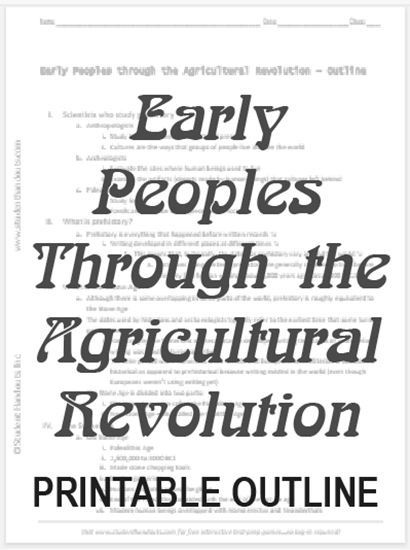 I. Scientists who study prehistory
I. Scientists who study prehistorya. Anthropologists i. Study human cultures, both past and present ii. Cultures are the ways that groups of people live and see the world b. Archæologists i. Excavate the sites where human beings used to live ii. Examine the artifacts (objects made by human beings) that cultures left behind c. Paleontologists i. Study fossils ii. Fossils are evidence of life preserved in rocks II. What is prehistory? a. Prehistory is everything that happened before written records ↘ i. Writing developed in different places at different times ↘ 1. This means that, technically, the dates for prehistory vary around the world ↘ a. Historians using the term prehistory are generally referring to time before the very first human writing, about 5,000 years ago (circa 3000 B.C.E.) III. What is the Stone Age? a. Although there is some overlapping in some parts of the world, prehistory is roughly equivalent to the Stone Age b. The dates used by historians and archaeologists typically refer to the earliest time that some turning point occurred i. For example, the Sumerians of Mesopotamia developed writing thousands of years before writing was used by European tribes ii. The time period when Sumerians were literate and Europeans were illiterate is considered historical as opposed to prehistorical because writing existed in the world (even though Europeans weren't using writing yet) c. The Stone Age is divided into two parts: i. Old Stone Age—also called the Paleolithic Age ii. New Stone Age—also called the Neolithic Age IV. The Stone Age a. Old Stone Age i. Paleolithic Age ii. 2,500,000 to 8000 B.C.E. iii. Made stone chopping tools iv. Hunter-gatherers v. Humans migrated across the globe vi. End of the Paleolithic coincided with the end of the last ice age vii. Modern human beings overlapped with Homo erectus and Neanderthals viii. Cave paintings and small carvings b. New Stone Age i. Neolithic Age ii. 8000-3000 B.C.E. iii. Humans made numerous tools, as well as jewelry, from bone, wood, stone, tusks, etc. iv. Pottery v. Permanent settlements vi. Agriculture (farming) vii. Animal domestication viii. Modern human beings left as the only hominids on the planet V. The last ice age a. Humans (nomadic hunter-gatherers) spread out across the globe (in bands of 25-70 people) in search of game and edible plants i. The ice created a bridge between what we now call Siberia and Alaska ii. Humans crossed this bridge (called Beringia) to North America and spread to South America very quickly b. The ice age ended about 10,000 years ago (circa 8000 B.C.E.), leaving humans living all over the world i. The ice bridge (Beringia) between Siberia and Alaska melted, leaving humans in the Americas separated from the rest of the world c. Temperatures increased, creating a longer growing season i. The ice receded, making the land drier and better for growing plants ii. During the ice age, a lot of large game was hunted to extinction (like wholly mammoths) iii. The invention of farming allowed people to maintain a steady food supply VI. The Agricultural Revolution a. The Agricultural Revolution is also called the Neolithic Revolution i. People developed farming for the first time b. For generations, humans had noticed plants growing where they had spit out seeds c. Humans began planting seeds on purpose, which was the invention of farming d. The final farming method was slash-and-burn i. Farmers burnt grass and trees to clear a field ii. The ashes fertilized the soil iii. Farmers relocated every few years after exhausting the soil e. People continued to hunt, returning to their farms to harvest their crops i. Eventually, people built permanent homes near their farms so they could store and guard their grain f. Permanent homes made following game difficult i. Eventually, farmers domesticated animals, such as cattle, goats, pigs, and sheep ii. Animals ate farm waste while fertilizing the soil with their waste VII. Agriculture around the world a. Africa (Nile River Valley) i. 5000 B.C.E.—wheat, barley b. Central America and Mexico i. 5000 B.C.E.—beans, corn, squash c. China i. 6000 B.C.E.—millet ii. 5000 B.C.E.—rice d. India (Indus River Valley) i. 5000 B.C.E.—cotton e. Iraq (Mesopotamia—Fertile Crescent) i. 5000 B.C.E.—wheat, barley f. Peru i. 3000 B.C.E.—tomatoes, potatoes VIII. Catal Huyuk a. One of the world's very first permanent settlements i. Populated 7500-5700 B.C.E. b. Located in what is now Turkey c. Population of approximately 6,500 people i. 1,000 dwellings crammed together like a honeycomb ii. No streets—people climbed out through ladders in their ceilings d. Supported by agriculture and animal domestication i. Barley, peas, wheat ii. Cattle, sheep e. Famous because it is so well-preserved f. Trivia fact: The oldest-known village in the world existed in Jericho (in modern-day Israel) in 9000 B.C.E. IX. Why live in a settled community? a. Pros i. Common culture expressed ii. Mutual protection iii. Near farms iv. Grain and seed storage b. Cons i. Disease spreads more rapidly among a dense population ii. Grain stores were tempting to raiders iii. Permanent settlements suffered from natural disasters (drought, fire, floods) X. Review questions a. Describe the work of three types of scientists who study prehistory. b. Generally, when did prehistory end and history begin? c. How did the Neolithic (New Stone Age) differ from the Paleolithic (Old Stone Age)? d. How did humans reach the Americas during the last ice age? e. What was life like in a settled community such as Catal Huyuk? f. Imagine that you are a nomadic hunter-gatherer living 5,000 years ago. Would you maintain your lifestyle, or would you start farming? Explain your answer. Click here to print. Click here for this outline in PowerPoint format. |
 | 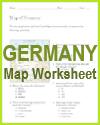 | 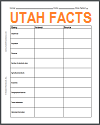 |  | 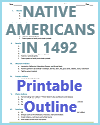 | 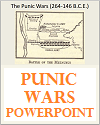 |
| Early Humans Books and Films | Early Humans Outlines and PowerPoints |
| Early Humans Maps and Pictures | Early Humans Study Games |
| Early Humans Miscellany | Early Humans Worksheets |
| www.studenthandouts.com ↣ World History ↣ Early Humans ↣ Early Humans Outlines & PPTs |














































